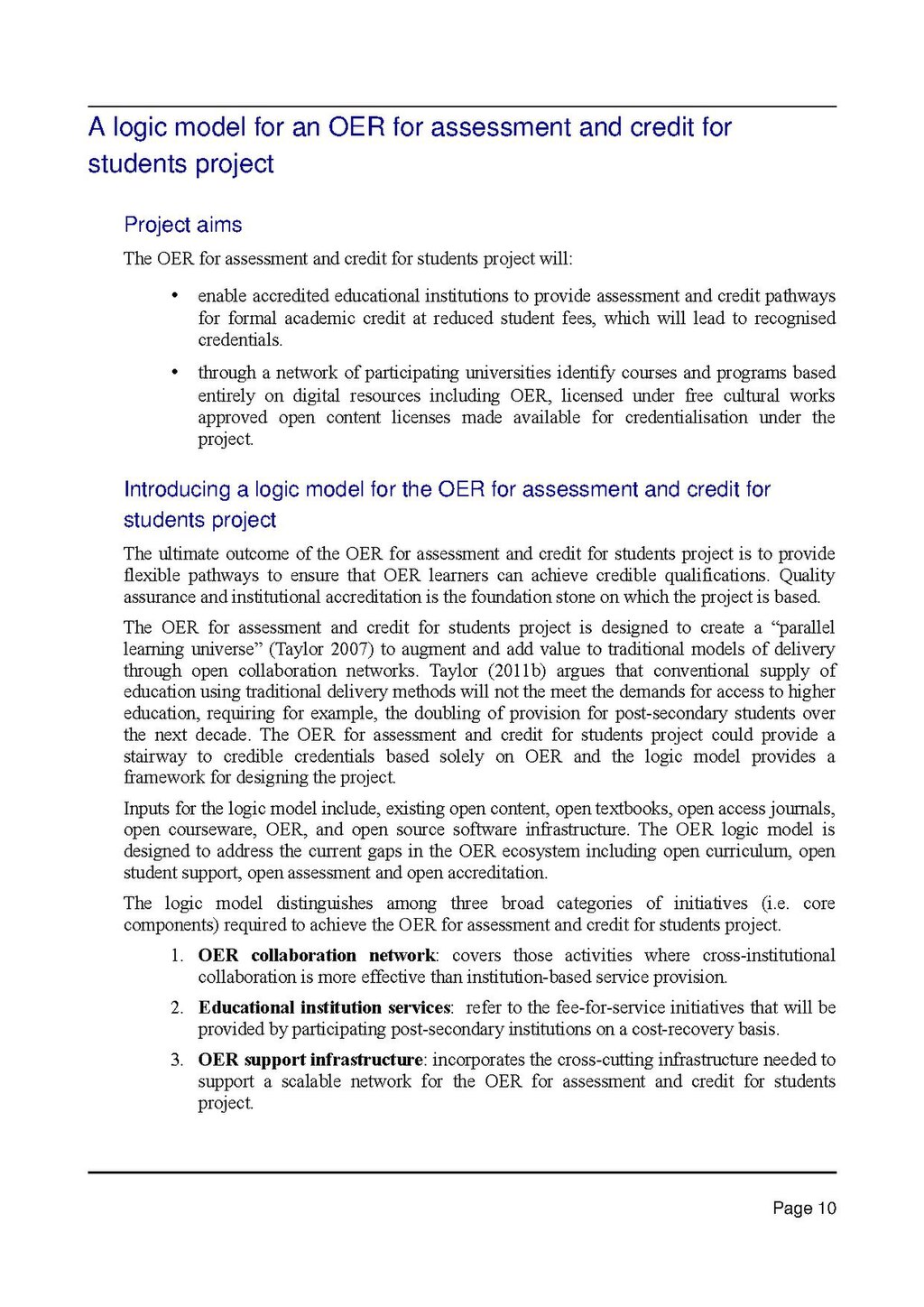A logic model for an OER for assessment and credit for students project
Project aims
The OER for assessment and credit for students project will:
- enable accredited educational institutions to provide assessment and credit pathways for formal academic credit at reduced student fees, which will lead to recognised credentials.
- through a network of participating universities identify courses and programs based entirely on digital resources including OER, licensed under free cultural works approved open content licenses made available for credentialisation under the project.
Introducing a logic model for the OER for assessment and credit for students project
The ultimate outcome of the OER for assessment and credit for students project is to provide flexible pathways to ensure that OER learners can achieve credible qualifications. Quality assurance and institutional accreditation is the foundation stone on which the project is based.
The OER for assessment and credit for students project is designed to create a "parallel learning universe" (Taylor 2007) to augment and add value to traditional models of delivery through open collaboration networks. Taylor (2011b) argues that conventional supply of education using traditional delivery methods will not the meet the demands for access to higher education, requiring for example, the doubling of provision for post-secondary students over the next decade. The OER for assessment and credit for students project could provide a stairway to credible credentials based solely on OER and the logic model provides a framework for designing the project.
Inputs for the logic model include, existing open content, open textbooks, open access journals, open courseware, OER, and open source software infrastructure. The OER logic model is designed to address the current gaps in the OER ecosystem including open curriculum, open student support, open assessment and open accreditation.
The logic model distinguishes among three broad categories of initiatives (i.e. core components) required to achieve the OER for assessment and credit for students project.
- OER collaboration network: covers those activities where cross-institutional collaboration is more effective than institution-based service provision.
- Educational institution services: refer to the fee-for-service initiatives that will be provided by participating post-secondary institutions on a cost-recovery basis.
- OER support infrastructure: incorporates the cross-cutting infrastructure needed to support a scalable network for the OER for assessment and credit for students project.
